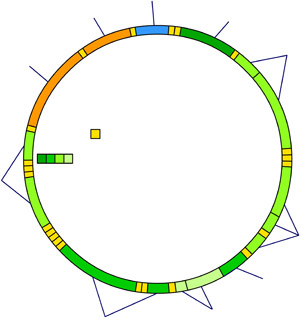![]()

Image of mitochondrial DNA, image credit Wikipedia Commons
I learned of the National Geographic Genographic Project (no longer available) through a program on television. I thought that it would be interesting to see where my distant relatives started in time and where their travels led them.
After submitting the DNA sample I waited anxiously for the results. I kept up with the progress through the website. Following each step to understand how the processes are used to extract the DNA. In my case, being a female, my mitochondrial genomes were traced. The results are displayed online and only took a total of eight weeks to process. The project will start from the earliest known man, from 170,000 to 150,000 years ago, and give you a history of how my specific haplogroup came to be.
I learned that my specific haplogroup originated in East Africa about 50,000 years ago and came from hunter-gatherer groups. They then moved north, being the first humans to have left Africa, probably due to climate fluctuations. They moved into Western Asia and were thought to have coexisted with other hominids, known as Neanderthals. About 40,000 years ago, they were present during early and middle upper Paleolithic times and were largely considered one of the main genetic signatures of the Neolithic expansion. My haplogroup were part of the first agriculturists. Their greater diversity was in the Near East rather than in Europe. About 25% comprised around Bedouin and Yemeni. This is where my haplogroup gets murky and the trail goes cold.
Although more research is needed, this project gave me a great start of tracing my heritage. I have submitted my DNA for further research and look forward to any updates that may become available.
PS. There are some other similar genome projects available, including the DNA Ancestry Project.